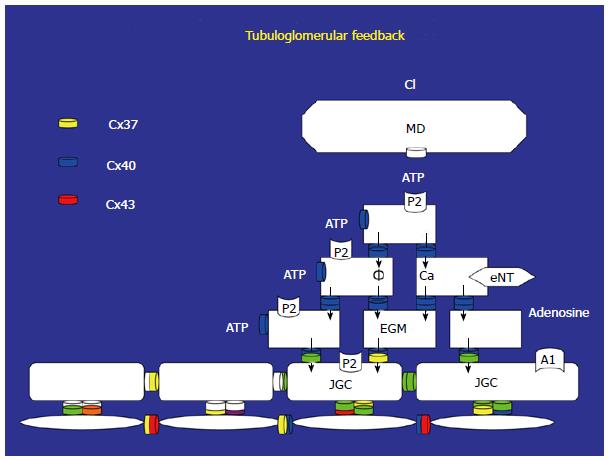Copyright
©The Author(s) 2015.
World J Diabetes. May 15, 2015; 6(4): 576-582
Published online May 15, 2015. doi: 10.4239/wjd.v6.i4.576
Published online May 15, 2015. doi: 10.4239/wjd.v6.i4.576
Figure 2 Sodium chloride is delivered to macula densa, macula densa releases adenosine triphosphate.
Adenosine triphosphate (ATP) binds to P2 receptor on extraglomerular mesangial cell (EGM), and induces membrane depolarization and/or elevations of cytosolic calcium. These signals are transduced to juxtaglomerular cells (JGC) by intercellular communication through gap junctions consisted of connexins (Cx). In addition, ATP is degraded to adenosine by ecto-nucleotidase (eNT) on EGM. Adenosine binds to A1 receptor on JGC, increasing cytosolic calcium. Calcium waves generated in JGC transduce through gap junctions between afferent arteriolar myocytes to its upstream, eliciting ascending vasoconsitiction (refs 8 and 10). MD: Macula densa; Cl: Chloride.
- Citation: Takenaka T, Inoue T, Watanabe Y. How the kidney hyperfiltrates in diabetes: From molecules to hemodynamics. World J Diabetes 2015; 6(4): 576-582
- URL: https://www.wjgnet.com/1948-9358/full/v6/i4/576.htm
- DOI: https://dx.doi.org/10.4239/wjd.v6.i4.576









